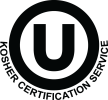If you’re like most of us, you grew up on nachos, vending machine cinnamon rolls, and fast food chicken sandwiches. Our parents would give us a few dollars. We’d eat whatever tasted good. And more often than not, if it was cheap and tasty, it was also accelerating chronic disease and climate change. That’s how unjust our food system is.
We think there are a couple reasons for this. First, the tools of our food system are limited. We’re talking soy, corn, processed sugar, and animal protein. These are the core ingredients that the biggest food companies are using to make the food that is all around us. And it’s not that these big companies don’t care. In fact, they do care. It’s hard to do anything different.
And it’s not just a limitation of tools, it’s a mindset. The world does not believe it’s possible to have healthier, sustainable food that is also affordable and delicious. That keeps anyone from even trying.
We are trying to change that mindset. We started with this idea that we would build a food system that makes it really easy for people to eat well. How do you create a system like that? And could we get it done in our lifetime? How would that change things? And what would we need to do, day-to-day, as a company, to make that happen?
It starts with the tools.

